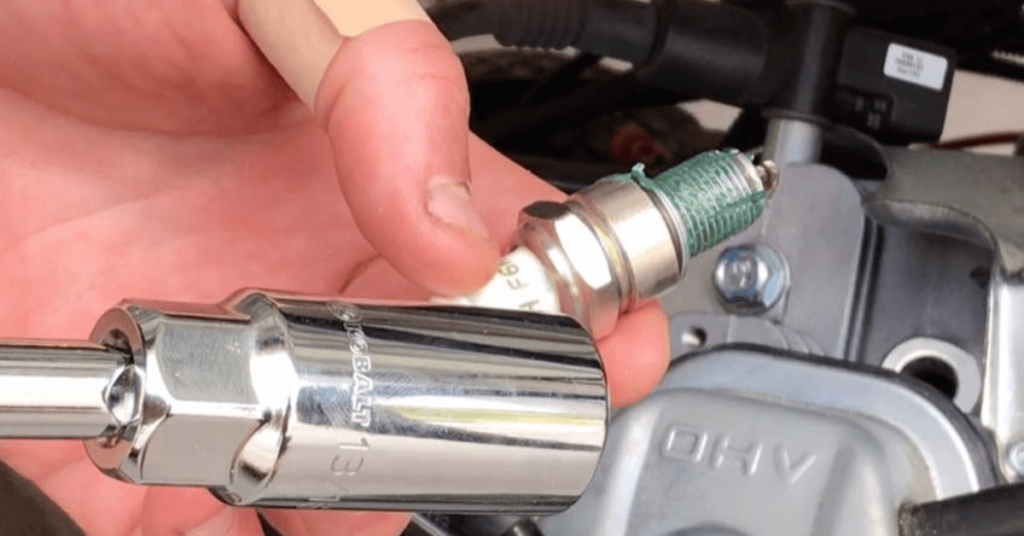Electric generators are an important tool for both residential and commercial settings, as they provide a reliable source of backup power during power outages or in remote locations.
However, if not used properly, they can pose significant safety hazards. One of the most important safety measures that electric generator owners should take is the installation and maintenance of a proper spark arrestor. By preventing hot particles from escaping the generator’s exhaust system, spark arrestors can help to reduce the risk of accidental fires and protect the environment from potential harm.

What Is A Spark Arrestor?
A spark arrestor is a device that is designed to prevent sparks or other hot debris from being expelled from the exhaust system of a combustion engine, such as an electric generator. Spark arrestors are commonly used in outdoor equipment that has the potential to start fires, such as chainsaws and lawnmowers.

A spark arrestor works by trapping or cooling down hot particles that are produced by the combustion process before they exit the exhaust system. This prevents the particles from igniting flammable materials in the environment, such as dry grass or leaves. The use of a spark arrestor can significantly reduce the risk of accidental fires caused by the use of electric generators.
Types Of Spark Arrestors
There are two main types of spark arrestors: metal mesh and ceramic. Metal mesh spark arrestors are made of wire mesh screens that trap hot particles and prevent them from escaping the exhaust system. Ceramic spark arrestors, on the other hand, use a combination of materials, including ceramic fibers and binders, to capture and cool hot particles.
The choice of spark arrestor type depends on the specific generator and its intended use. Factors to consider include the type of fuel used, the size of the generator, and the environment in which the generator will be used. Additionally, it is important to ensure that the spark arrestor chosen complies with local laws and regulations.
Importance OF Spark Arrestors For Electric Generators
Electric generators produce sparks as a byproduct of the combustion process. These sparks can ignite flammable materials in the environment, such as dry leaves, grass, or other debris. This can lead to accidental fires, which can be especially dangerous in remote areas where fire suppression is difficult.
The installation of a spark arrestor is required by law in many areas, including national forests and other public lands. In addition to complying with legal requirements, the use of a spark arrestor can also help protect the environment and prevent property damage or injury.
Factors To Consider When Choosing A Spark Arrestor
When choosing a spark arrestor for an electric generator, there are several factors to consider. These include the type of fuel used, the size of the generator, and the environment in which the generator will be used.
For example, generators that use gasoline require spark arrestors that are designed to handle the higher temperatures and spark rates produced by gasoline combustion engines. Similarly, larger generators require spark arrestors that can handle the higher exhaust volumes produced by larger engines.
It is also important to choose a spark arrestor that is certified by relevant safety organizations, such as the National Fire Protection Association (NFPA) or the Occupational Safety and Health Administration (OSHA).
Installing A Spark Arrestor
Installing a spark arrestor is a relatively simple process that can be done by most generator owners. The first step is to determine the correct location for the spark arrestor on the generator’s exhaust system. This will typically be near the end of the exhaust pipe, where the hot particles are most likely to exit.
Once the location has been determined, the spark arrestor can be attached to the exhaust pipe using clamps or other attachment mechanisms. It is important to ensure that the spark arrestor is securely fastened to the exhaust pipe, as loose connections can result in hot particles escaping and potentially causing a fire.
Before using the generator, it is important to check that the spark arrestor is functioning properly by visually inspecting it and testing the generator for any unusual sounds or emissions.
Maintaining A Spark Arrestor
Proper maintenance of a spark arrestor is essential for ensuring its continued effectiveness. Regular maintenance can also help extend the lifespan of the spark arrestor and prevent the need for costly repairs or replacements.
One important aspect of spark arrestor maintenance is cleaning. Over time, the mesh or ceramic materials in the spark arrestor can become clogged with soot and other debris, reducing its effectiveness. Regular cleaning can help prevent clogging and ensure that the spark arrestor continues to function properly.
Cleaning a spark arrestor typically involves removing it from the exhaust pipe and soaking it in a cleaning solution, such as soap and water, or a specialized cleaning solution designed for spark arrestors. Once the spark arrestor has been cleaned, it should be allowed to air dry before being reinstalled.
Troubleshooting A Faulty Spark Arrestor
In some cases, a spark arrestor may become faulty or fail to function properly. This can be caused by a variety of factors, including clogging, damage to the materials, or improper installation.
Signs of a faulty spark arrestor include a decrease in engine performance, increased emissions, and unusual sounds or odors coming from the generator. If these signs are observed, it is important to immediately stop using the generator and inspect the spark arrestor for damage or clogging.
In some cases, a faulty spark arrestor may be repaired by cleaning or replacing damaged materials. However, in other cases, it may be necessary to replace the spark arrestor entirely.
FAQs: Why Electric Generators Need A Proper Spark Arrestor
What is the lifespan of a spark arrestor?
The lifespan of a spark arrestor depends on several factors, including the frequency of use and the environment in which the generator is used. With proper maintenance and care, a spark arrestor can last for several years.
Can I use a spark arrestor for different types of fuels?
Spark arrestors are designed to handle specific types of fuels, such as gasoline or diesel. It is important to choose a spark arrestor that is specifically designed for the type of fuel used by the generator.
What happens if I don’t install a spark arrestor?
If a spark arrestor is not installed, hot particles and other debris can escape the generator’s exhaust system and potentially start a fire.
Conclusion
Electric generators are essential for providing backup power in a variety of settings. However, they can also pose serious safety hazards if not used properly. One important safety measure that generator owners should implement is the installation and maintenance of a proper spark arrestor.
Spark arrestors work by preventing hot particles from escaping the generator’s exhaust system and potentially causing a fire. There are several factors to consider when choosing a spark arrestor, including the type of fuel used and the size of the generator.
Regular maintenance, including cleaning and inspection, is essential for ensuring the continued effectiveness of a spark arrestor. If a spark arrestor becomes faulty, it is important to immediately stop using the generator and inspect the spark arrestor for damage or clogging.
By taking the necessary steps to properly install and maintain a spark arrestor, generator owners can help protect themselves, their property, and the environment from potential hazards.




